PHOTOS: Hubble's turn to smile, marks 25 years in orbit
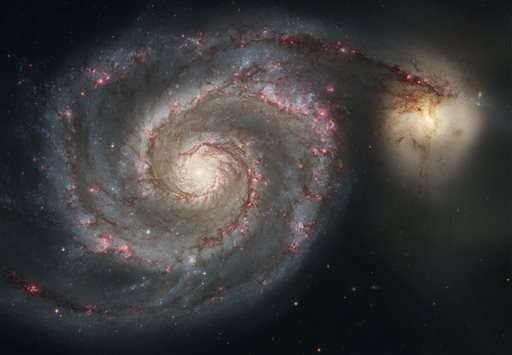
Hubble, it's your turn to smile for the cameras!
Friday marks the 25th anniversary of the Hubble Space Telescope's launch into orbit.
One of NASA's grandest achievements, Hubble has peered into the far recesses of the universe and provided humbling glimpses of stars at the moments of their birth and death. Its images have dazzled and inspired the world, both scientists and ordinary folk.
Its tally to date: more than 1.2 million observations of more than 38,000 celestial objects.
Launched by space shuttle Discovery on April 24, 1990, the telescope initially had blurry vision because of a flawed mirror. Spacewalking astronauts put in corrective lens, restoring not only Hubble's eyesight but NASA's integrity. Five times shuttle astronauts visited to make improvements and repairs. John Grunsfeld was on three of those missions and the last person to touch it, in 2009.
Astronomers have learned to use Hubble "in such exquisite ways" thanks to a quarter-century of operations, according to Grunsfeld, now NASA's associate administrator for science missions. He expects the observatory to keep wowing the world with its science for at least another five years.
"It really is the people's telescope," he said.
-
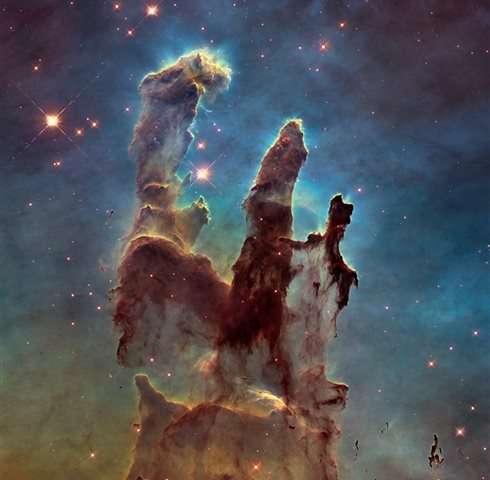
This image made by the NASA/ESA Hubble Space Telescope shows the Eagle Nebula's "Pillars of Creation." The dust and gas in the pillars is seared by the intense radiation from young stars and eroded by strong winds from massive nearby stars. The Hubble Space Telescope marks its 25th anniversary. A full decade in the making, Hubble rocketed into orbit on April 24, 1990, aboard space shuttle Discovery. (NASA, ESA/Hubble, Hubble Heritage Team via AP) -
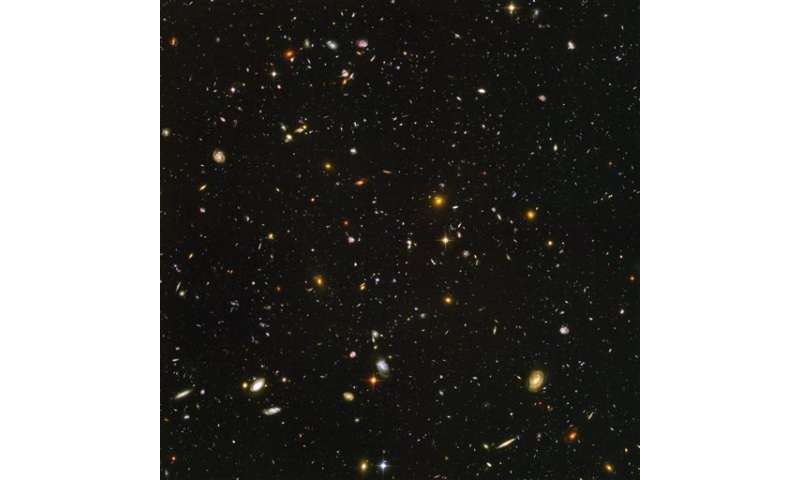
This image made by the NASA/ESA Hubble Space Telescope shows nearly 10,000 galaxies in the deepest visible-light image of the cosmos, cutting across billions of light-years. The Hubble Space Telescope marks its 25th anniversary. A full decade in the making, Hubble rocketed into orbit on April 24, 1990, aboard space shuttle Discovery. (NASA, ESA, S. Beckwith (STScI), HUDF Team via AP) -
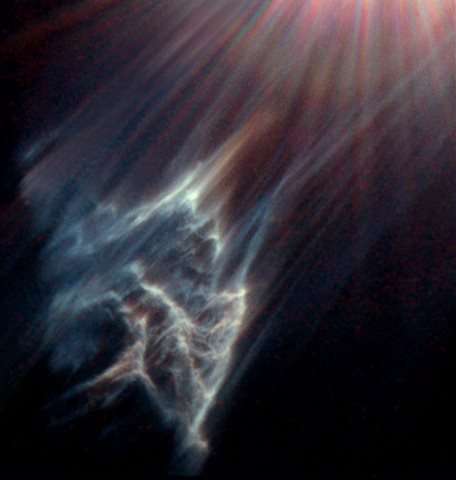
This image made by the NASA/ESA Hubble Space Telescope shows the tendrils of a dark interstellar cloud being destroyed by the passage of one of the brightest stars in the Pleiades star cluster. The Hubble Space Telescope marks its 25th anniversary. A full decade in the making, Hubble rocketed into orbit on April 24, 1990, aboard space shuttle Discovery. (NASA/ESA, Hubble Heritage Team STScI/AURA, George Herbig via AP) -
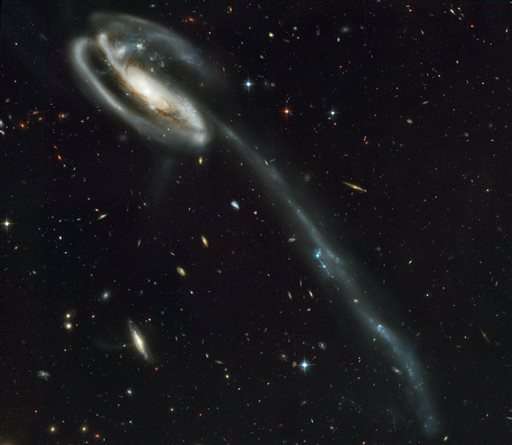
This image made by the NASA/ESA Hubble Space Telescope shows galaxy UGC 10214 with the long streamer of stars. Its distorted shape was caused by another galaxy passing nearby. The Hubble Space Telescope marks its 25th anniversary. A full decade in the making, Hubble rocketed into orbit on April 24, 1990, aboard space shuttle Discovery. (NASA, Holland Ford (JHU), ACS Science Team, ESA via AP) -
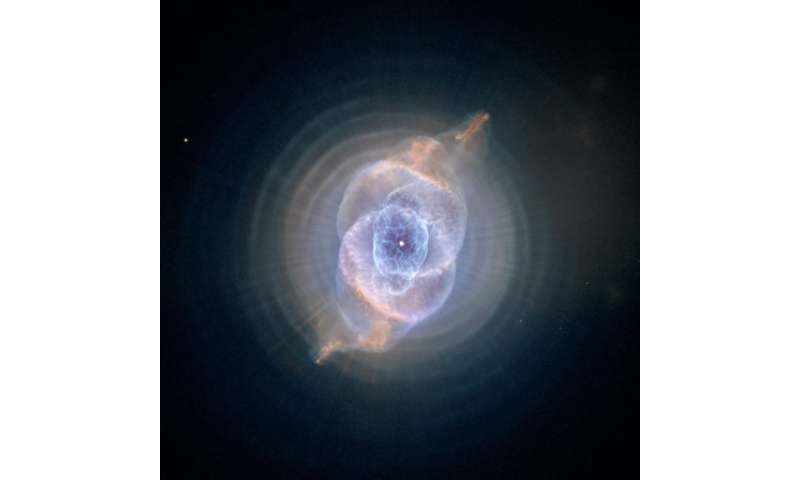
This image made by the NASA/ESA Hubble Space Telescope shows NGC 6543, the Cat's Eye Nebula. A planetary nebula forms when Sun-like stars gently eject their outer gaseous layers that form bright nebulae. In 1994, Hubble first revealed the nebula's surprisingly intricate structures, including concentric gas shells, jets of high-speed gas, and unusual shock-induced knots of gas. The Hubble Space Telescope marks its 25th anniversary. A full decade in the making, Hubble rocketed into orbit on April 24, 1990, aboard space shuttle Discovery. (NASA, ESA, HEIC, Hubble Heritage Team (STScI/AURA) via AP) -
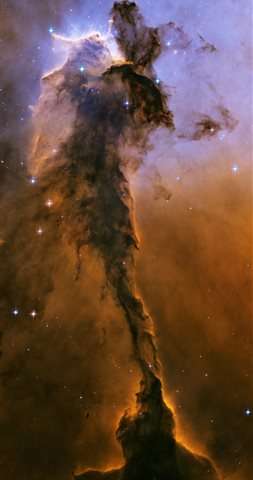
This image made by the NASA/ESA Hubble Space Telescope shows a tower of cold gas and dust rising from a stellar nursery called the Eagle Nebula. The soaring tower is 9.5 light-years high, about twice the distance from our Sun to the next nearest star. The Hubble Space Telescope marks its 25th anniversary. A full decade in the making, Hubble rocketed into orbit on April 24, 1990, aboard space shuttle Discovery. (NASA, ESA, Hubble Heritage Team STScI/AURA via AP) -
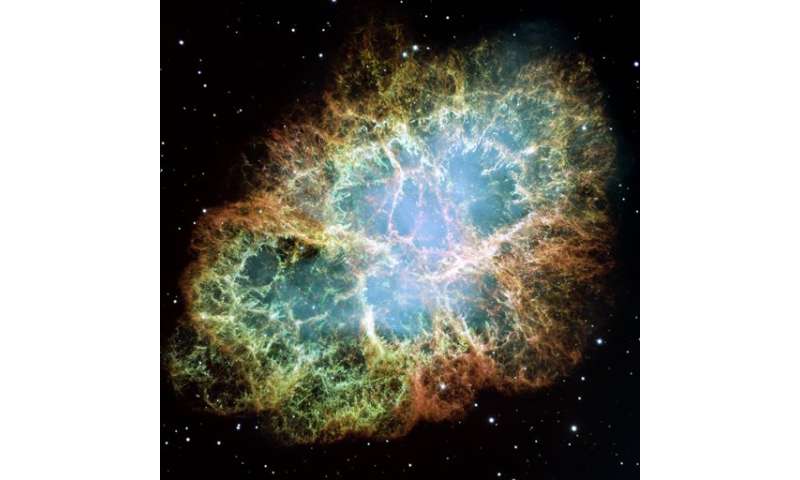
This image made by the NASA/ESA Hubble Space Telescope shows the entire Crab Nebula. The Hubble Space Telescope marks its 25th anniversary. A full decade in the making, Hubble rocketed into orbit on April 24, 1990, aboard space shuttle Discovery. (NASA, ESA, Allison Loll/Jeff Hester - Arizona State University via AP) -
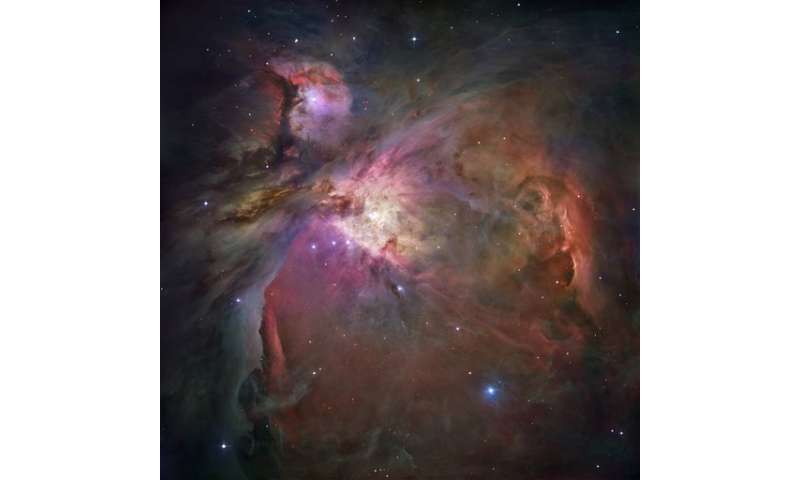
This image made by the NASA/ESA Hubble Space Telescope shows the Orion Nebula and the proceess of star formation, from the massive, young stars that are shaping the nebula to the pillars of dense gas that may be the homes of budding stars. The Hubble Space Telescope marks its 25th anniversary. A full decade in the making, Hubble rocketed into orbit on April 24, 1990, aboard space shuttle Discovery. (NASA, ESA, M. Robberto - Space Telescope Science Institute/ESA via AP) -
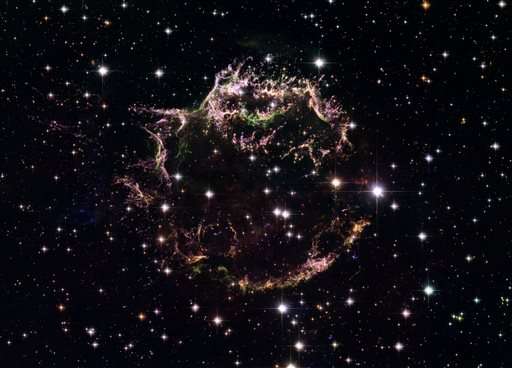
This image made by the NASA/ESA Hubble Space Telescope shows the tattered remains of a supernova explosion known as Cassiopeia A. It is the youngest known remnant from a supernova explosion in the Milky Way. The Hubble Space Telescope marks its 25th anniversary. A full decade in the making, Hubble rocketed into orbit on April 24, 1990, aboard space shuttle Discovery. (NASA, ESA, Hubble Heritage STScI/AURA-ESA/Hubble Collaboration via AP) -

This image made by the NASA/ESA Hubble Space Telescope shows the star cluster Pismis 24 in the core of the large emission nebula NGC 6357. Part of the nebula is ionised by the youngest (bluest) heavy stars emitting intense ultraviolet radiation, heating the gas surrounding the cluster and creating a bubble in NGC 6357. The Hubble Space Telescope marks its 25th anniversary. A full decade in the making, Hubble rocketed into orbit on April 24, 1990, aboard space shuttle Discovery. (NASA/ ESA, Jesus Maiz Apellaniz - Instituto de Astrofisica de Andalucía, Spain via AP) -
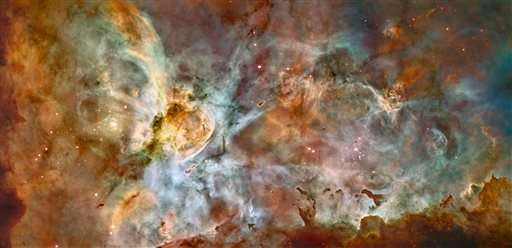
This false-color image made by the NASA/ESA Hubble Space Telescope shows the Carina Nebula. Outflowing winds and intense ultraviolet radiation from the large stars shape the material that is the last vestige of the giant cloud from which the stars were born. Red corresponds to sulfur, green to hydrogen, and blue to oxygen emission. The Hubble Space Telescope marks its 25th anniversary. A full decade in the making, Hubble rocketed into orbit on April 24, 1990, aboard space shuttle Discovery. (NASA/ESA, N. Smith - University of California, Berkeley/Hubble Heritage Team (STScI/AURA) via AP) -
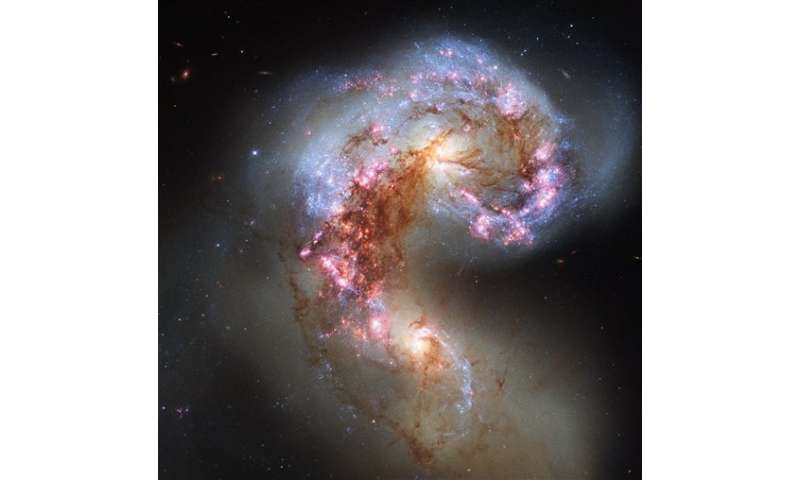
This image made by the NASA/ESA Hubble Space Telescope shows NGC 4038 and NGC 4039, known as the Antennae Galaxies. Once normal, sedate spiral galaxies like the Milky Way, the two have spent the past few hundred million years intertwining with one another. Far-flung stars and streamers of gas stretch out into space, creating long tidal tails reminiscent of antennae. They are expected to eventually form one large elliptical galaxy. The Hubble Space Telescope marks its 25th anniversary. A full decade in the making, Hubble rocketed into orbit on April 24, 1990, aboard space shuttle Discovery. (ESA/Hubble,NASA via AP) -
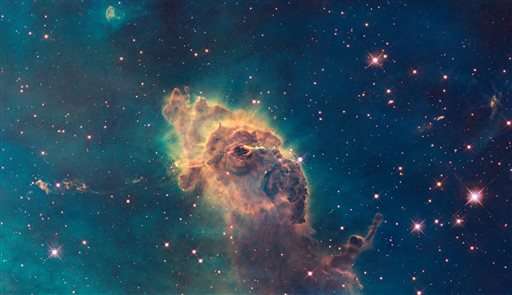
This image made by the NASA/ESA Hubble Space Telescope shows the tip of the three-light-year-long pillar in a stellar nursery called the Carina Nebula, located 7500 light-years away from the Earth. Composed of gas and dust, the structure is illuminated by light from hot, massive stars off the top of the image. The Hubble Space Telescope marks its 25th anniversary. A full decade in the making, Hubble rocketed into orbit on April 24, 1990, aboard space shuttle Discovery. (NASA/ESA/Hubble SM4 ERO Team via AP) -
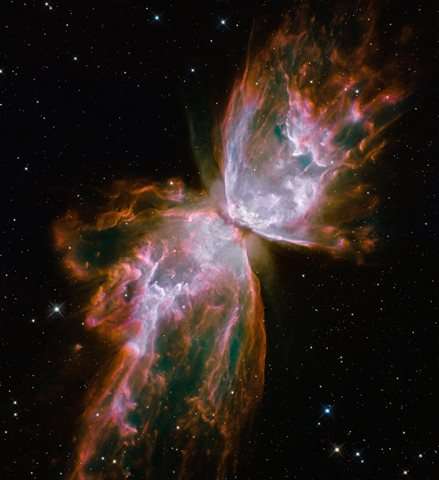
This image made by the NASA/ESA Hubble Space Telescope shows jets of gas heated to nearly 20,000 degrees Celsius traveling at more than 950,000 kilometres (59,000 miles) per hour streaming from they dying star NGC 6302, the "Butterfly Nebula" in the Milky Way galaxy. The star was once about five times the mass of the Sun. (NASA/ESA/Hubble SM4 ERO Team via AP) -
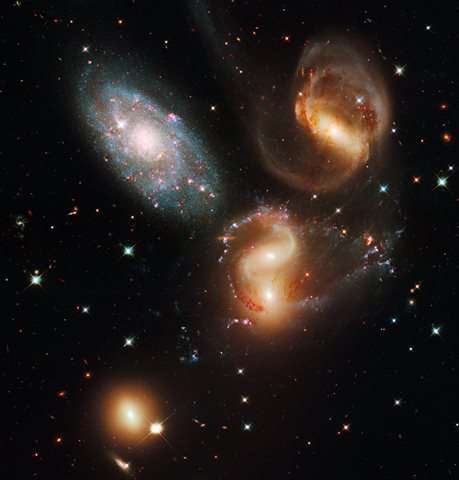
This image made by the NASA/ESA Hubble Space Telescope shows a group of five galaxies known as Stephan's Quintet. Three of the galaxies have distorted shapes, elongated spiral arms, and long, gaseous tidal tails containing myriad star clusters, proof of their close encounters. But studies have shown that group member NGC 7320, at upper left, is actually a foreground galaxy that is about seven times closer to Earth than the rest of the group. The Hubble Space Telescope marks its 25th anniversary. A full decade in the making, Hubble rocketed into orbit on April 24, 1990, aboard space shuttle Discovery. (NASA/ESA/Hubble SM4 ERO Team via AP) -
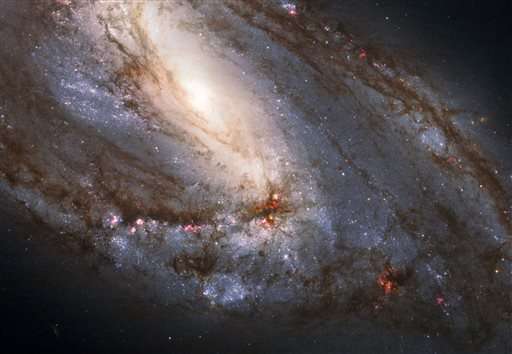
This image made by the NASA/ESA Hubble Space Telescope shows M66, the largest of the Leo Triplet galaxies. It has asymmetric spiral arms and an apparently displaced core most likely caused by the gravitational pull of the other two members of the trio. The Hubble Space Telescope marks its 25th anniversary. A full decade in the making, Hubble rocketed into orbit on April 24, 1990, aboard space shuttle Discovery. (NASA, ESA, Hubble Heritage (STScI/AURA)-ESA/Hubble Collaboration via AP) -
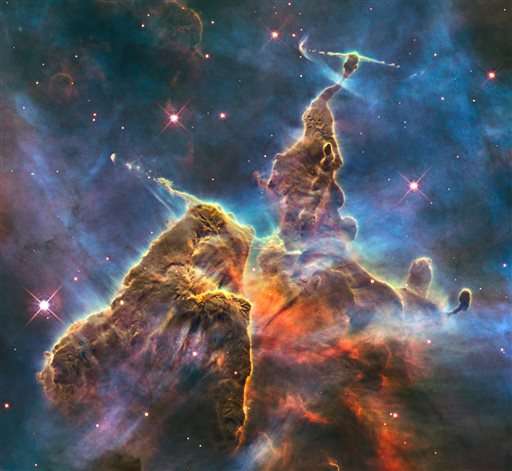
This February 2010 image made by the NASA/ESA Hubble Space Telescope shows a three-light-year-tall pillar of gas and dust in the Carina Nebula which is being eaten away by the light from nearby bright stars. Inside, infant stars fire off jets of gas that can be seen streaming from towering peaks. The stellar nursery is located 7500 light-years away in the southern constellation of Carina. The colors in this composite image correspond to the glow of oxygen (blue), hydrogen and nitrogen (green), and sulphur (red). The Hubble Space Telescope marks its 25th anniversary. A full decade in the making, Hubble rocketed into orbit on April 24, 1990, aboard space shuttle Discovery. (NASA/ESA, M. Livio, Hubble 20th Anniversary Team (STScI) via AP) -
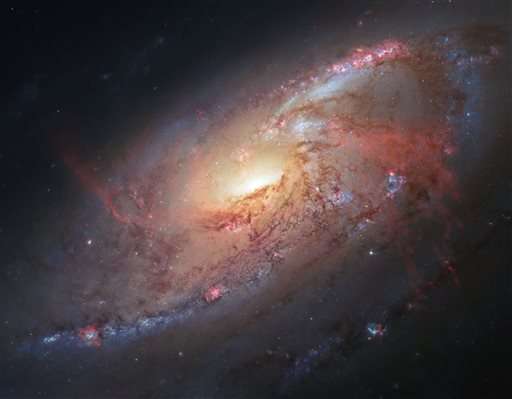
This image made by the NASA/ESA Hubble Space Telescope shows M106 with additional information captured by amateur astronomers Robert Gendler and Jay GaBany. Gendler combined Hubble data with his own observations to produce this color image. It is a relatively nearby spiral galaxy, a little over 20 million light-years away. The Hubble Space Telescope marks its 25th anniversary. A full decade in the making, Hubble rocketed into orbit on April 24, 1990, aboard space shuttle Discovery. (NASA/ ESA/ Hubble Heritage Team (STScI/AURA), R. Gendler via AP) -
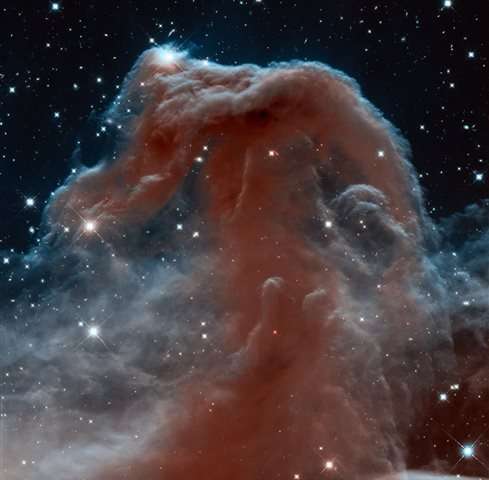
This image made by the NASA/ESA Hubble Space Telescope shows Barnard 33, the Horsehead Nebula, in the constellation of Orion (The Hunter). This image shows the region in infrared light, which has longer wavelengths than visible light and can pierce through the dusty material that usually obscures the nebula's inner regions in visible light. The Hubble Space Telescope marks its 25th anniversary. A full decade in the making, Hubble rocketed into orbit on April 24, 1990, aboard space shuttle Discovery. (NASA/ESA/ Hubble Heritage Team (AURA/STScI) via AP) -
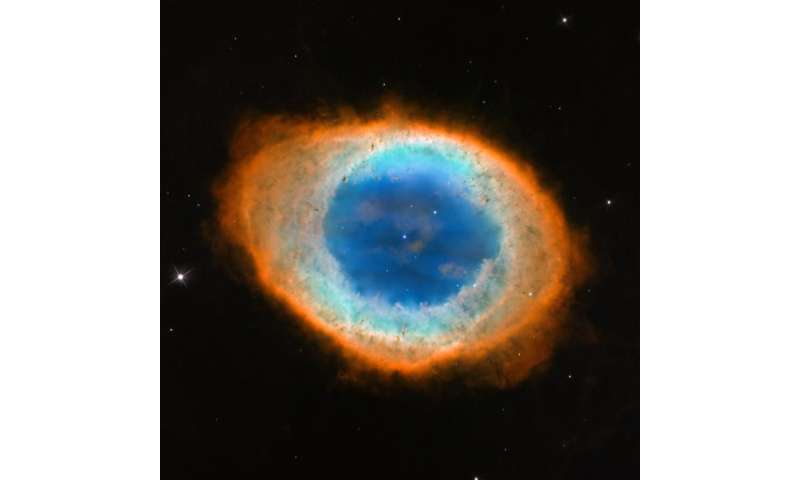
This image made by the NASA/ESA Hubble Space Telescope shows Messier 57, the Ring Nebula. The Hubble Space Telescope marks its 25th anniversary. A full decade in the making, Hubble rocketed into orbit on April 24, 1990, aboard space shuttle Discovery. (NASA/ESA, C. Robert O'Dell (Vanderbilt University) via AP) -
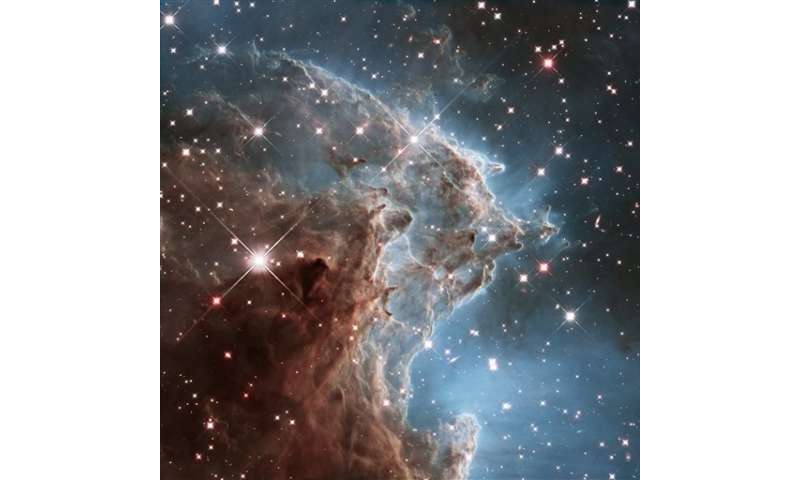
This infrared image made by the NASA/ESA Hubble Space Telescope shows part of NGC 2174, the Monkey Head Nebula. The structure lies about 6400 light-years away in the constellation of Orion (The Hunter). The Hubble Space Telescope marks its 25th anniversary. A full decade in the making, Hubble rocketed into orbit on April 24, 1990, aboard space shuttle Discovery. (NASA/ESA/Hubble Heritage Team (STScI/AURA) via AP) -

This image made by the NASA/ESA Hubble Space Telescope shows the barred spiral galaxy NGC 1300. It is considered to be prototypical of barred spiral galaxies. The Hubble Space Telescope marks its 25th anniversary. A full decade in the making, Hubble rocketed into orbit on April 24, 1990, aboard space shuttle Discovery. (NASA/ESA, Hubble Heritage Team STScI/AURA via AP) -
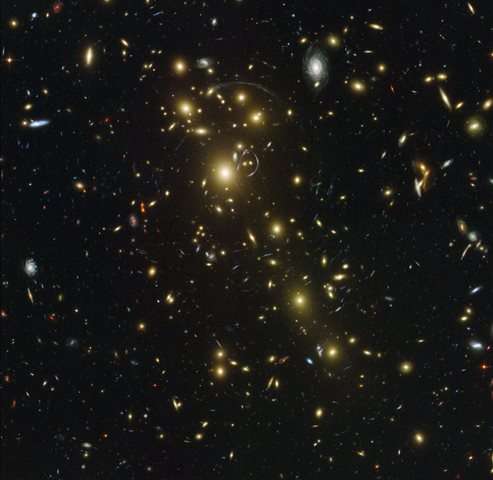
This image made by the NASA/ESA Hubble Space Telescope shows Abell 1703 which is composed of over one hundred different galaxies whose collective mass acts as a gravitational lens. The massive galaxy cluster in the foreground (yellow mostly elliptical galaxies scattered across the image) bends the light rays of galaxies behind it in a way that can stretch their images into multiple arcs. Abell 1703 is located at 3 billion light-years from the Earth. The Hubble Space Telescope marks its 25th anniversary. A full decade in the making, Hubble rocketed into orbit on April 24, 1990, aboard space shuttle Discovery. (NASA/ESA, and Johan Richard (Caltech, USA) via AP) -
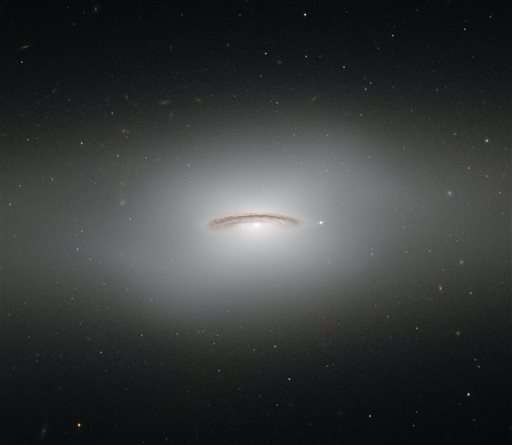
This image made by the NASA/ESA Hubble Space Telescope shows NGC 4526. One of the brightest lenticular galaxies known, it has hosted two known supernova explosions, one in 1969 and another in 1994, and is known to have a supermassive black hole at its center with a mass of 450 million Suns. NGC 4526 is part of the Virgo cluster of galaxies. A version of this image was entered into the Hubble's Hidden Treasures image processing competition by contestant Judy Schmidt during an initiative to invite astronomy enthusiasts to search the Hubble archive for notable images that have never been seen by the general public. The Hubble Space Telescope marks its 25th anniversary. A full decade in the making, Hubble rocketed into orbit on April 24, 1990, aboard space shuttle Discovery. (ESA/Hubble & NASA via AP)
© 2015 The Associated Press. All rights reserved.





















